Being a renowned carrier in the country, Air Canada designed a straightforward baggage policy for its passengers. Whether you’re a seasonal traveler or a frequent flyer, going through Air Canada Baggage Allowance is essential. By the end of this page, you will be able to understand what and how much to pack for the trip. We have discussed the Baggage Allowance for Air Canada Domestic Flights as well as international flights. Join us for insight on the updated baggage policy of Air Canada.
Baggage Rules for Air Canada Passengers
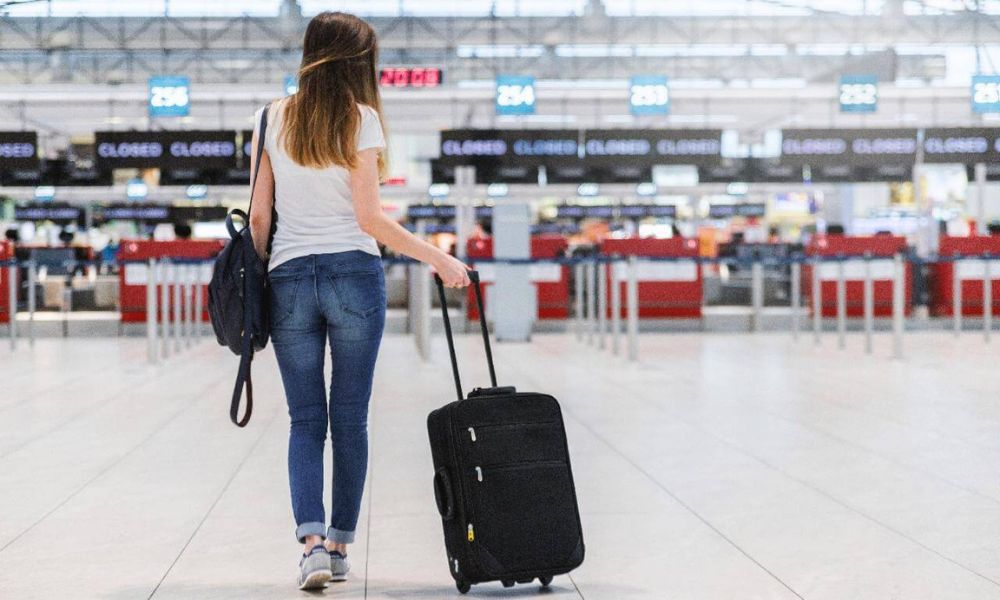
Air Canada baggage information is crucial for passengers boarding the flight. Ensure you pack everything for the trip according to the baggage rules of Air Canada. The airline accepts only the baggage that is appropriate for the trip. Any baggage outside the allowance or maximum limit is not permitted for transportation. Therefore, pack items according to the Air Canada baggage weight and size restrictions.
Passengers are instructed to affix baggage tags outside their luggage and put baggage ID cards inside it. Please ensure that your bag does not have any old baggage baggage tag so there is no confusion. Also, mention your destination, home address, and contact information on the baggage tag. This information comes in handy afterward when you collect your baggage.
Air Canada Carry On Size and Weight Limits
Passengers can bring one carry-on on a flight regardless of their purchased fare. The Air Canada carry on dimensions must be 55 x 23 x 40 cm. Such baggage is accepted inside the flight cabins. However, ensure that you do not pack anything that can disrupt the safety of other passengers and crew members on board. Moreover, there is no Air Canada weight limit for carry-on bags. But, passengers are instructed to pack the following items inside:
- Laptops, Tablets, iPads, etc.
- House and car keys
- Medicines
- Cash
- Valuable items such as cameras, jewelry, and electronic devices.
- Important papers or identification documents.
In addition to a carry-on bag, passengers can bring the following items as well:
- Coat, jacket, or a outer garment
- Small purse or a handbag under 25cm x 30cm x 14cm (10in x 12in x 5.5 in), larger bags are counter as carry-on bag.
- Infant care and hygiene items, e.g. diaper bag
- Stroller – collapsed diameter under 25.5 cm (10 in) and length under 92 cm (36 in).
- Child restraint device
- Food and snack options:
- It must be properly wrapped or packed in a container..
- Passengers are not allowed to consume alcoholic beverage brought by themselves.
- Electronic cigarettes
- Books or magazines
- Bic-type lighters
Automated Cabin Bag Sizer for Air Canada Flights
To make sure passengers carry the right-sized cabin bag on flights, Air Canada has introduced automated baggage sizers. These are available pre-security in selected airports: Montreal (YUL), Toronto (YYZ), and Vancouver (YVR) airports. These machines are much easier to use than the previous ones. Every passenger has to ensure that their bags comply with the Air Canada baggage size. If it is the correct size, you can avoid checking the size at the airport.
Note that baggage exceeding the carry on size of Air Canada is treated as checked or additional baggage. Accordingly, the passenger is liable to pay the standard fee as well. Therefore, it is recommended to pack according to the Air Canada Baggage Allowance to avoid extra fees.
Air Canada Personal Item Regulation
In addition to carry-on, passengers can also bring one personal item with them on all flights. Air Canada personal item size must be 33 x 16 x 43 cm. You have to place this item under the seat in front of you. Passengers traveling with an infant can bring one additional item for your child. Some examples of Air Canada Personal Items and carry-on are shown below:
- Carry-on bag,
- Roller bag,
- Backpack,
- Briefcase,
- Laptop
- Sport racquet (for example, tennis, squash, badminton),
- Musical instrument
- Pet in its carrier
- Camera bag
- Duty-free plus airport purchases
- Garment bag
Air Canada Checked Baggage Allowance
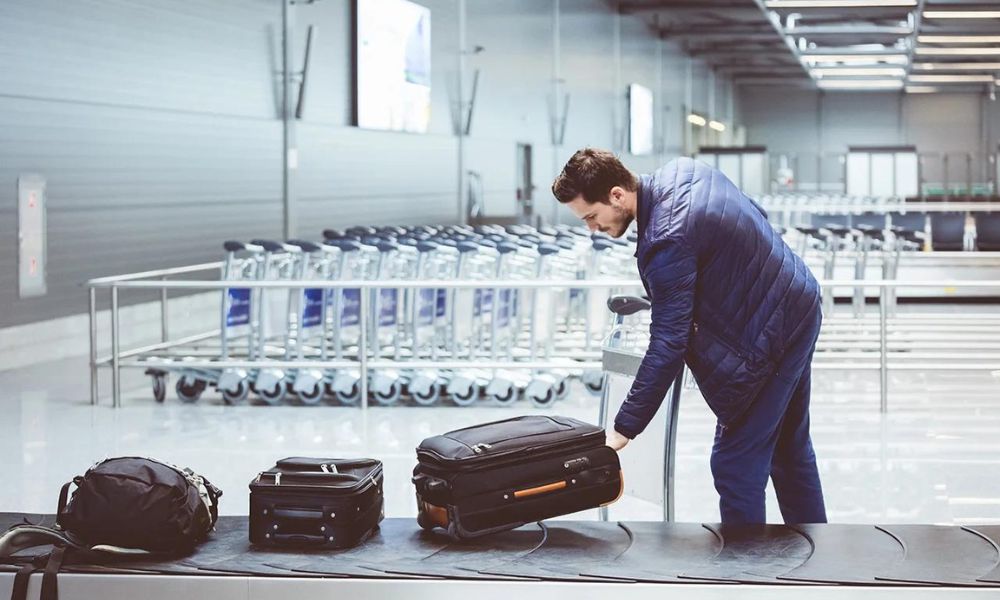
Air Canada offers free baggage allowance to its passengers depending on the purchased ticket, selected route, and passenger status. Checked baggage weight allowance must be under 23kg or 50 lbs, and the maximum dimension must be under 158 cm or 62 inches. This is applicable on all flights irrespective of the selected route and travel class.
Some fares and destinations are eligible for free checked baggage, while some are not. Therefore, use the checked baggage calculator to clear your confusion. Head to the website and fill in the required details to check the permitted number of hold baggage with additional charges. Passengers holding Comfort and Flex fares can check their first bag for free on almost every route. Also, Air Canada Vacations Baggage Allowance permits passengers to carry first checked baggage for free. Passengers with vacation bookings enjoy exclusive perks and pack freely for their trip.
Air Canada International Baggage Allowance
Passengers flying to or from international cities may get the benefit of first free checked baggage. There is the possibility of getting both first and second baggage for free. However, the allowance ultimately depends on the purchased fare and selected route. Passengers with Economy fares are not likely to get free checked baggage every time. However, it is possible that other fares like Premium and Business class will always get a free allowance.
Air Canada Checked Baggage Fee
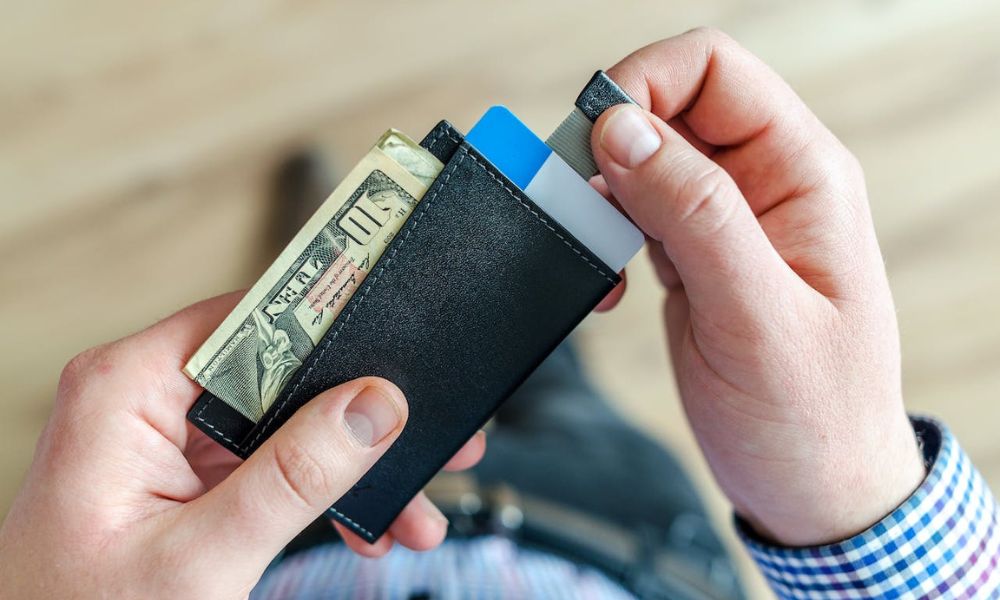
Passengers will have to pay to check in a bag if it’s not included in their free allowance as per the Air Canada hold baggage allowance. The airline charges the Air Canada Checked Baggage Fee separately for the first and second bags. Please note that if the transaction is occurring outside Canada, the amount is charged as per the local currency of the country. Check how much you have to pay to check in your bag according to different travel classes:
1. Economy Class travel within Canada
| Basic and Standard fares | First bag: 30.00 CAD – 36.00 CAD Second bag: 50.00 CAD – 60.00 CAD |
| comfort and Flex fares | First bag: FREE Second bag: 50.00 CAD – 60.00 CAD |
| Latitude fares | Two bags FREE |
2. Economy Class travel between Canada and the U.S.
| Basic and Standard fares | First bag: 30.00 CAD – 36.00 CAD Second bag: 50.00 CAD – 60.00 CAD |
| comfort and Flex fares | First bag: FREE Second bag: 50.00 CAD – 60.00 CAD |
| Latitude fares | Two bags FREE |
3. Economy Class travel between Canada and Mexico or the Caribbean
| Basic and Standard fares | First bag: 30.00 CAD Second bag: 50.00 CAD |
| comfort and Flex fares | First bag: FREE Second bag: 50.00 CAD |
| Latitude fares | Two bags FREE |
4. Baggage Fee for Other International Routes
The Air Canada baggage allowance charges for flights between Canada and other international routes vary depending on the selected route and the ticket issued date. For Economy fares, the airline charges 75 CAD for the first bag and 100 CAD for the second bag.
When to Pay Applicable Checked Baggage Fee?
Passengers can pay checked baggage fees online on their cell phones or at the airport via kiosk or at the check-in counter. In case baggage is delayed, damaged, or lost, Air Canada refunds the checked baggage fee amount. It is worth noting that some airports do not accept cash for the payment. Passengers have the option to pay the fees using major credit and debit cards. Such airports are listed below:
- Airport counters of Air Canada located in the United States
- Air Canada counters at the following Canadian airports:
- Calgary (YYC)
- Edmonton (YEG)
- Fort McMurray (YMM)
- Halifax (YHZ)
- Montréal (YUL)
- Ottawa (YOW)
- Quebec City (YQB)
- Saskatoon (YXE)
- St. John’s (YYT)
- Toronto Island (YTZ)
- Toronto Pearson (YYZ)
- Vancouver (YVR)
- Victoria (YYJ)
- Winnipeg (YWG)
Air Canada Additional & Extra Baggage

If the checked baggage is over the free allowance permitted by the fare type, it is termed additional checked baggage. A baggage that is over the limit is termed as extra or excess baggage. It may be exceeding the limit in number, size, or weight. Such baggage is subject to additional charges as well. Passengers checking in extra bags must arrive at the airport early, at least 2 hours before the scheduled takeoff.
The overweight and oversized limits are levied on all itineraries. Air Canada checked baggage weighing from 23kg to 32kg are accepted as overweight bags. On the other hand, bags that measure between 63 and 115 inches are accepted as oversized. Passengers will have to get in touch with Air Canada Cargo if the baggage is over the following limits:
- 32 kg or 70 lb in weight,
- 292 cm or 115 inches in linear dimensions, and/or
- 203 cm or 80 inches in length.
Extra Baggage Fee on Air Canada Flights
The charges for Air Canada’s oversized/ overweight and additional bags are different. Unlike standard fees, passengers have to pay additional charges according to the selected route.
Check below:
1. Flights within Canada
| Type of Baggage | Additional Fee Amount |
| Overweight or oversized bag | $100.00 – $120.00 |
| Overweight and oversized bag | $100.00 – $120.00 |
| Additional bag (Baggage over free allowance) | $100.00 – $120.00 |
2. Flights between Canada and the United States
| Type of Baggage | Additional Fee Amount |
| Overweight or oversized bag | $100.00 – $120.00 |
| Overweight and oversized bag | $100.00 – $120.00 |
| Additional bag (Baggage over free allowance) | $100.00 – $120.00 |
3. Flights between the U.S. and Mexico/Costa Rica/Caribbean/Bermuda
| Type of Baggage | Additional Fee Amount |
| Overweight or oversized bag | $100.00 |
| Overweight and oversized bag | $100.00 |
| Additional bag (Baggage over free allowance) | $225 |
4. Flights between Canada and other international destinations
| Type of Baggage | Additional Fee Amount |
| Overweight or oversized bag | $100.00 |
| Overweight and oversized bag | $100.00 |
| Additional bag (Baggage over free allowance) | $225 |
Common List of Prohibited Items on Air Canada Flights
Air Canada applies restrictions on items that are checked in for transportation as well as brought inside the flight cabin. Some items that are harmful to the safety of passengers and crew members are strictly prohibited. Please refer to the list of common restricted and prohibited items below. Items that are restricted have to follow specific conditions. For this, you can always refer to the airline’s official website or find information on the Canadian Air Transport Security Authority website.
| Restricted or Prohibited Items | Common Restricted Items |
| Air Purifiers and Ionizers | Batteries |
| Avalanche Rescue Backpacks | Battery-operated vehicles |
| Compressed Gas or Cylinders | Camping Equipment |
| Corrosive and Oxidizing Materials | Curling Irons |
| Defence or Incapacitating Sprays | Dry Ice, Brine or, Gel or Ice Packs |
| Explosives or Flammable Liquids and Solids | Liquids and Gels ( aerosols, toiletries, and alcoholic beverages) |
| Firearms and Ammunition | Meals, Ready-to-eat |
| Fuel-powered Equipment | Oxygen for Medical Purposes |
| Paint | Powder (including baby powder, dry shampoo, and powder detergent) |
| Poisons and Toxins | Personal Electronic Devices |
| Radioactive Materials | Lighters |
| Smart Bags | Battery-operated devices |
Air Canada Special Baggage
Some items are fragile, bulky, and differently shaped, which usually do not come under the baggage allowance. The airline sets special restrictions and guidelines for these items, thus referred to as special baggage. We have discussed the regulations for such baggage one by one below:
1. Sports Equipment
Air Canada allows passengers to bring their sports equipment on their flights. However, some restrictions are still there that everyone should follow. Here’s what you need to learn before packing your favorite equipment.
You must register your sports equipment in advance of scheduled departure. Passengers can do so at least a day before the date of travel by contacting the Air Canada Reservation, Air Canada Vacations. If you booked the ticket through a travel agency, contact the concerned agent. Please note that registering the item in advance does not guarantee the airline will accommodate each item. It is your duty to reconfirm it with the airport agent while checking in.
a) Instructions for Packing and Applicable Charges
Passengers are instructed to pack sports equipment in suitable bags. The bags must not contain other items like clothing or personal items, or else the airline will not accept them. You can check in the following equipment as checked baggage. Please refer to the official website for detailed packaging instructions for each item.
| Archery equipment (bows and arrows) | Firearms used for sporting activities |
| Avalanche rescue equipment | Golf Clubs |
| Bat and balls | Hammer (Athletic) |
| Bicycles | Hockey/lacrosse/ringette/cricket equipment |
| Boating equipment | Ice Skates |
| Boogie boards, skim-, speed- and skateboards | Inline Skates (Roller Blades) |
| Broomball or curling equipment | Kayaking equipment |
| Climbing gear | Parachutes and parachuting equipment |
| Equestrian equipment | Pole Vaults and javelin |
| Fencing equipment | Racquets (badminton, squash, tennis, table tennis) |
| Sports balls (inflatable) and bowling balls | Scuba diving equipment |
| Surfboards, paddleboards, kiteboards, wakeboards, and wave skis | Skeleton Sleds |
| Skis and snowboards | Fishing equipment |
The airline will not accept the following equipment as checked baggage as per the Austrian Airlines Baggage Allowance. Thus, make sure not to pack them for your journey or find an alternative.
- Bobsleighs
- Canoes
- Hang gliders
- Luges
- Windsurfing equipment
2. Musical Instruments
Air Canada will accept your musical instruments as both checked and carry-on baggage. This is decided based on which standard allowance the instrument meets. Stringed instruments are easily affected when transported by air. Damages can occur due to changes in temperature and pressure. So, passengers are responsible for loosening the strings beforehand. The instruments should be appropriately packed to prevent any potential damage.
a) Bring Instruments as Carry-on Baggage
Passengers are permitted to bring musical instructions as carry-on bags, providing they meet the standard size restrictions. Carry it without hassle if the instrument fits the overhead compartment or under the seat in front. Otherwise, purchase an additional seat for it. If you do so, the airline will offer you a 50% discount on the additional seat on all fares.
b) Carry Musical Instrument as Checked Baggage
If the instrument is not up to the carry-on size of Air Canada, you always have the option to check it in. If you decide to check it in, the airline will count it as one piece of checked baggage against your total allowance. In case the baggage count exceeds the maximum number (instrument + permitted number of bags), an additional fee is applied. Make sure that the instrument is packed correctly for transportation or use packaging material designed for shipping.
3. Hunting Equipment
Sometimes passengers travel with their hunting equipment, which is not a problem if special conditions are met. Firstly, inform the airlines on time and register the equipment in advance. You can register the hunting equipment until 24 hours before the scheduled departure. Similar to sports equipment, there is no guarantee the airline will accommodate each item registered in advance. Additionally, passengers must reach the airport at least 30 minutes before the standard check-in time. Head to the official website to check specific instructions and charges for the following equipment:
- Ammunition
- Antlers and Horns
- Archery Equipment – Bows and Arrows
- Bounty
- Firearms
- Fishing Equipment
Air Canada Fee Charged for Special Items
Special items on Air Canada flights are also applicable for additional charges. The fee amount may vary according to the type of equipment or instrument. Passengers can pay the fee according to their convenience.
| Type of Special Item | Applied Charges |
| Hunting Equipment | Antlers and horns: 150 CAD – 177 CADFirearms: 50 CAD – 59 CAD |
| Sports Equipment | Bicycle or a Firearm – 50 CAD Surfboard, paddleboard, kiteboard, wakeboard, or wave ski – 100 CAD |
Frequently Asked Questions (FAQs)
Passengers are not allowed to pack items that can be harmful to the passengers, such as flammable items, sharp objects, poisons, toxins, etc.
All passengers are permitted to carry one carry-on bag along with one personal item for free. However, checked baggage allowance may vary depending on the purchased fare.
Yes, passengers can carry two checked baggage on Air Canada flights if Premium Economy, Premium Rogue, and Business Class are purchased.
If the baggage is over 23kg, Air Canada charges additional charges for the excess baggage. It can be up to 120 CAD.
Air Canada can charge from 50 CAD to 100 CAD for sports equipment, it must be packed properly, or else the airline will not accept it.
Yes, passengers can carry two checked baggage on Air Canada international flights.
Yes, Air Canada offers free baggage allowance, which varies according to purchased fare, travel class, and selected destination.
Yes, Air Canada premium and business class fares permit passengers to check their first bag for free. In some cases, you can check two bags for free.
Yes, you can add extra baggage on Air Canada flights by paying an additional fee of up to $225. The baggage must be under 32kg.
In this case, passengers have to contact the Air Canada Cargo department for baggage over 32kg and 292 linear dimensions.
Passengers can only carry e-cigarettes on board on Air Canada flights. However, you cannot use them during the course of flight.


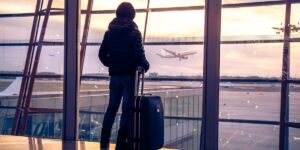
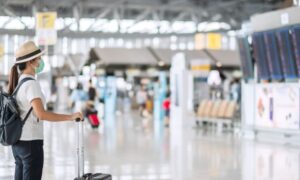
Comments
No comments yet.